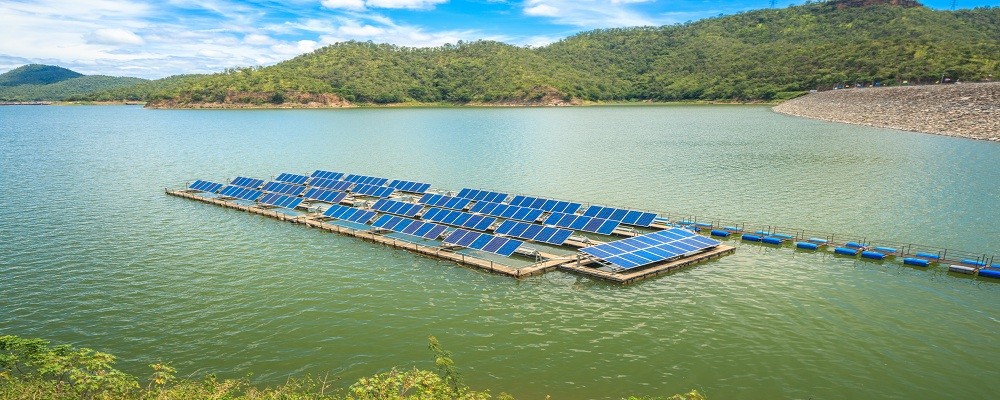Solar Industry- Latest Trends in Solar Technology
Since their inception in the 1960s, solar technologies have undergone a lot of changes over the years. Researchers and developers in the solar energy industry are constantly searching for new ways to improve the efficiency of solar panels. Earlier, solar photovoltaics (PV) were considered the future of solar cells. But today, with greater developments made in solar PV technology trend. Any recognized solar energy company is adopting the recent trends in solar energy, thus contributing to the industry’s success.
By the term “solar panels”, the first thing that appears to one’s mind is the image of rooftop solar cells. And this is for a good reason. Until today, these traditional rooftop solar panels have dominated the solar industry on a large scale. But this year, we have some impressive solar panel technologies that promise a brighter future for any solar PV system.
Let’s check the latest solar energy trends:-
1. Floating Solar Farms or ‘Floatovoltaics’
Yes, solar panels can float! ‘Floatovoltaics’ refers to those photovoltaic solar power systems that float on dams, reservoirs, and other water bodies. As silicon panels have become more efficient and cheaper day by day, some R&D teams in the solar energy industry suggested placing them on water bodies like dams. ‘Floatovoltaics’ have shown promising results in terms of higher efficiency rates, cost-effectiveness, and a range of other benefits.
These floating photovoltaic panels generate large amounts of electricity, and the best part is, that they don’t use any space on real estate or land. Studies say that due to the cooling effect of water, these floating solar cells produce more power by up to 10%. Further, there are much fewer installation charges involved compared to land-based cells. Besides producing electricity, these ‘floatovoltaics’ are also beneficial in water management by reducing water loss due to evaporation.
2. Solar Skins
Solar skins are an advanced form of PV technology designed to integrate solar panel systems with custom designs. Have you ever seen ad wraps displayed on public bus windows? Solar skins use similar technology.
Solar skins have been built with selective light filtration systems that help to maintain high efficiency. These skins are filtered to let in the sunlight, which then reaches the solar cells fitted underneath. This is the point when the custom image is displayed and solar energy is produced simultaneously.
3. BIPV Solar Technology
Building-integrated photovoltaics or BIPV solar technologies blend seamlessly into the building infrastructure in the form of curtain walls, roofs, terrace floors, facades, canopies, and skylight systems. The BIPV solar panel systems allow you to save on electric power and panel mounting costs, as well as building materials. Unlike traditional PV panels, BIPV adds to the aesthetic value of your building, while boosting energy efficiency.
4. Solar Fabric
As the name indicates, solar fabric is an advanced technology that allows you to produce your solar power on the move via your clothing, instead of generating energy at one fixed location. With the vision of including solar energy systems in each fiber, experts are embedding solar filaments into an individual’s garments, including winter coats, t-shirts, and others. Solar fabrics are designed to keep you warmer during the winter months and even enable you to charge your smartphone.
Likewise, researchers have further developed solar fabrics by combining them with solar panels for residential. Some examples include awnings to lighten up street lights, heated car seats, facades to provide both power and shade and curtains to eliminate energy consumption from the grid. Moreover, household solar fabrics can save big on installation and solar panel mounting costs.
5. Solar Roadways
Researchers are exploring solutions to line roads and highways with solar panels to generate huge amounts of electricity. This would help the industries to overcome space limitations and would save large acres of land. The technology made its debut in the Netherlands and is expected to be adopted by other countries soon.
6. Space-based Solar
Scientists are researching ways to capture sunlight via space-based satellites and convert it into microwave energy. The converted energy would then beam back to Earth. Solar satellites can be optimized in a favorable position to capture light 24/7 and are designed to absorb about 90% more sunlight than traditional solar panels.
Currently, India, Japan, and China are investing in these technologies to come up with more cost-effective and efficient power-generating solutions in the next few years.
7. Solar Batteries
It gained popularity in recent years due to its capability of generating energy from solar panels and storing it for later use. Solar batteries are made to connect with a solar inverter or solar charger controller for power backup. Storing and using renewable energy through solar batteries reduces energy bills to a great extent. Moreover, with these batteries, you will have more stable and secure power for your home for long hours.
8. AI and Automation
AI and machine learning have taken center stage in every field we can think of, and the solar industry is no exception. Artificial Intelligence in solar systems helps both the energy providers and their consumers to reduce energy waste by optimizing their energy consumption and recording vital data. Besides, AI can help one cope with emergencies while offering disaster management solutions.
With AI, solar systems can record any changes in temperature and meteorological conditions via smart devices like energy collectors. This allows the solar technologies to adjust automatically to the necessary settings stored, thus facilitating the anticipation of any emergencies.
9. Blockchain-based Solutions
Although blockchain technologies are primarily associated with the financial sector. These are highly beneficial for solar energy consumers as they are designed to eliminate any middleman. It enables households to optimize their energy consumption and also makes renewable energy much cheaper. Energy blockchain infrastructures allow providers to market energy directly without requiring any intermediary energy suppliers. Further, it enables consumers to use energy more cost-effectively and flexibly.
Conclusion
With such remarkable technologies being implemented in the solar industry, the future is promising for any struggling solar company in Rajasthan. With the speed with which solar systems are developing, that day is not far when we all will be having them in our homes. Imagine the number of electricity bills we will be saving per year!







